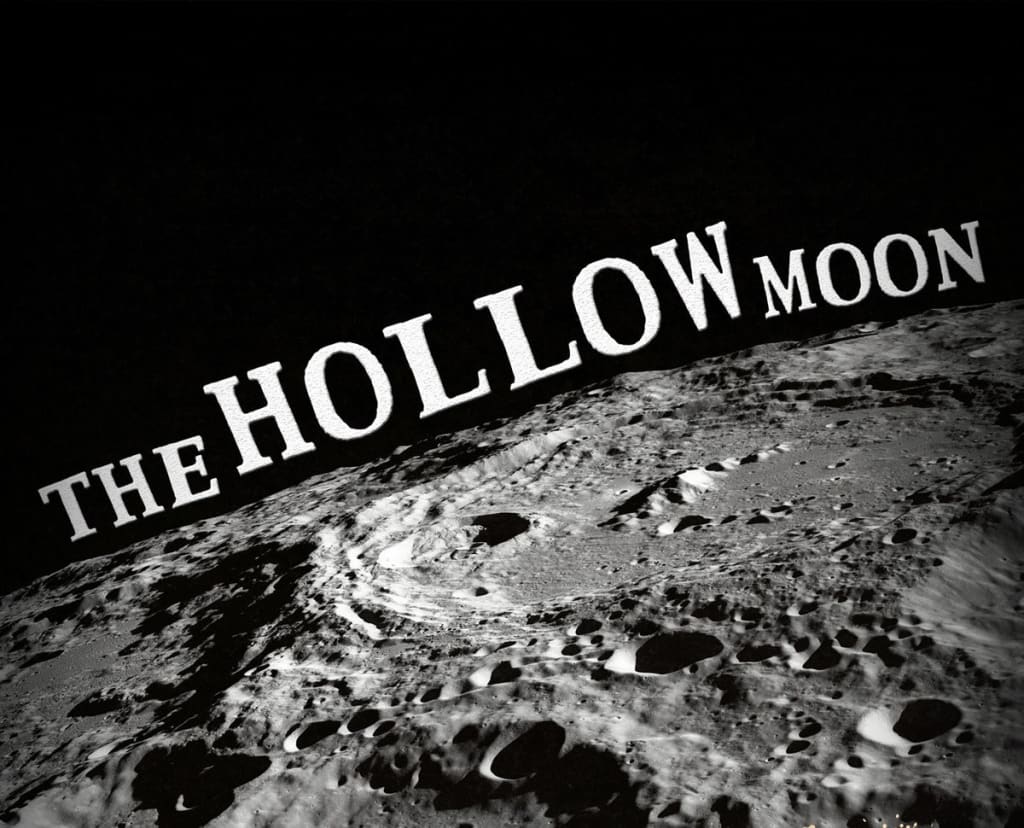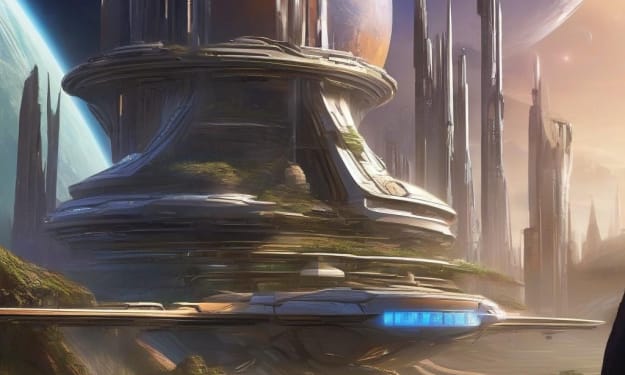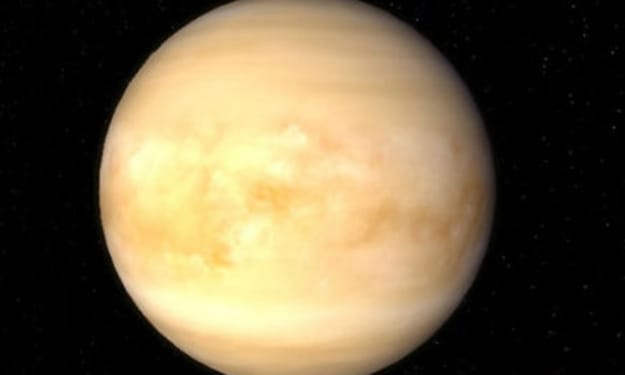Scientists Data and Astronaut Facts point to a Hollow Moon.
Diving into the Facts, Scientific Theories and Legends about the moon and its origin. You'll be amazed at what science has to say. Be prepared and expect the unexpected.

Despite being humanity's constant companion throughout most of recorded time, the moon remains a mystery. Science hasn't been able to explain how the moon was formed, its unusual orbit, its distance from us, its density, its composition, or its structure. These are all still questions. There are theories about the moon that solve some of these puzzles, but they don't solve all of them. Oddly enough, there's one theory that answers every scientific question about the moon, but this theory is also the hardest one to accept: that the moon is a hollow artificial structure brought here by someone else. We will explore this theory, but first, let's delve into the more conventional scientific theories.
Traditionally, we've been taught that the moon has existed since time immemorial, but the scientific community has not reached a consensus on its origin. Several theories have been proposed, including the capture theory, the accretion theory, the fission hypothesis, and the giant impact theory. However, each of these theories faces significant challenges and improbabilities.
For example, the first theory, the capture theory, suggests that the moon was floating along, drifted near the Earth, and was pulled into orbit. This is almost impossible, as the Earth's magnetic pull isn't strong enough to grab something as large as the moon. If it could, there would be millions of smaller sized meteors circling the earth as well. Another explanation is the accretion theory, which proposes that the moon and Earth formed from dust clouds in the early solar system. However, if the moon was formed this way, it should have an iron core like Earth and spin on an axis, neither of which is true.
The fission hypothesis, once popular, proposed that the early Earth was spinning so rapidly that the moon was formed from rock in the Pacific Ocean, flung into space. However, moon rocks are much older than the ocean floor, making this theory unlikely.
The most widely accepted scientific explanation is the giant impact theory, which suggests that a large object, about the size of Mars, collided with the proto-Earth, and the debris from this collision eventually formed the Earth-Moon system. Nevertheless, these conditions would have to be so perfect that the odds are astronomical.
A recent theory combines elements from various theories, proposing that a massive object collided with Earth billions of years ago, creating a vaporized state called a synestia. The moon then formed on the edge of this synestia. However, this theory remains highly speculative.
Before we explore the idea of the moon as an artificial structure, let's acknowledge what we do know about the moon. After all, we did land on it, which should provide answers to some questions, right? Surprisingly, our moon missions only deepened the mysteries surrounding the moon.
On Earth, the newest rocks are at the surface, with older rocks found deeper underground – a logical and straightforward principle. However, on the moon, the soil and surface rocks are older than the rocks underneath. The only way this occurs on Earth is through drilling, digging, and mining, bringing older materials to the surface. If the moon were hollowed out, it would explain why older rocks are on top. But the list of anomalies doesn't end there.
Typical planetary structures have denser materials toward the core and lighter materials toward the surface. However, on the moon, this pattern is reversed, and the reasons for this remain unexplained. Additionally, the moon's surface is marked by asteroid impacts that have occurred over billions of years. These impact craters should vary in depth, larger craters having more force, therefore creating deeper holes. Not on the moon, no matter how big or small the asteroids were, they left the same depth of crater. Also, the age of the asteroids that impacted the moon should vary as well. Surprisingly This isn’t the case, they are all strangely similar ages.
NASA's curiosity led to an interesting experiment during the Apollo missions. They placed seismometers on the moon's surface and, after returning to the command module, intentionally crashed the lunar lander into the moon's surface. The result was unexpected: seismic measurements showed that the moon rang like a bell, reverberating for more than an hour. In a subsequent Apollo mission, a heavier object was dropped onto the surface, causing the moon to ring for over three hours and vibrations traveled to a depth of 40 miles. On earth, reverberations last only a few minutes because of the earth's density and the vibrations slow down as they move toward the earth's center where material is denser. On the moon the vibrations actually got faster around 20 miles down. This suggests that the interior of the moon is not only less dense than its outer layers but possibly contains large hollow cavities.
On March 7th, 1971, an unusual event occurred on the moon when a cloud of water vapor appeared, covering a hundred square miles for 14 hours before dissipating. This should not have happened, as the moon is not supposed to have an atmosphere. Additionally, six astronomers in the past hundred years have observed strange lights on the moon. Some have reported glowing mists in the crater named Plato, which science cannot explain.
The moon's density poses another puzzle. Despite being about 1/25th the size of Earth, it is only about 1% of Earth's density. If the moon were a hollow shell, this would explain its low density. Furthermore, the moon exhibits characteristics and coincidences not found elsewhere. It is more akin to a planet than a typical moon, being one-quarter the size of Earth, and no other moon in the solar system is this large in proportion to its parent planet. The moon's orbit is another enigma, being much closer to Earth than expected and having a nearly perfect circular orbit – no other celestial bodies we have seen to date are this perfect.
Furthermore, the age of moon rocks and the chemical makeup of lunar dust is also very odd. If lunar dust is the result of billions of years of impacts, then why does it have a different chemical makeup to the moon rocks? Shouldn’t the dust on the surface, at least a good portion of it, be the same as the rocks? Since the impact that caused the craters would break up the meteors creating rocks and dust debris. Also, how come the moon doesn’t have a magnetic field and yet moon rocks are strongly magnetized? Another strange fact, the earth is 4.6 billion years old yet moon rocks are older, much older. Some rocks have been dated to the very beginning of the solar system and some are said to be even older than that.
since the age of moon rocks and the chemical composition of lunar dust present additional mysteries. Moon dust differs chemically from moon rocks, despite both originating from impacts. Moon rocks are also older than Earth, with some dating back to the early solar system's formation.
Since the days of Aristotle, astronomers have observed strange lights on the moon, sometimes visible to the naked eye. NASA has reported hundreds of sightings of unexplained light flashes on the moon between 1540 and 1967. Even more recent observations, like the glowing blue light in the Aristarchus crater, continue to baffle astronomers.
Immediately after landing on the moon, the Apollo 11 crew reported seeing something that deeply affected them. Their demeanor during the post-mission press conference seemed unusual, lacking the expected jubilation.
(Here is the link if you’d like to see for yourself. https://youtu.be/Yz6nzutr7RU?si=o5ovUaKLyXUOjgks )
Their reactions raise questions about whether they discovered something on the moon that ancient cultures may have known about for centuries. Could it be that the moon is not what it seems? Is it possible that the moon is a hollow, artificially constructed object that arrived in Earth's orbit from another distant location?
In 1970, two Soviet scientists considered all the evidence and coincidences and arrived at what they believed was the only logical conclusion. They proposed that the moon is not only hollow but also a spacecraft that arrived in our distant past. While this theory may sound far-fetched, it aligns with numerous anomalies and data regarding the moon's origin, composition, and characteristics.
The presence of elements like uranium-236 and neptunium-237 on the moon adds another layer of mystery, as these radioactive elements do not occur naturally. Additionally, metals like titanium, chromium, and zirconium are unusually abundant on the moon, despite being rare on Earth. These metals are known for their strength and resistance to corrosion, making them ideal for structural reinforcement, possibly explaining why moon craters all have consistent depths.
Ancient cultures around the world have stories about the moon, and intriguingly, many ancient tales speak of a time before the moon's arrival. Roman and Greek authors in the 5th century BC mentioned the Proselytes, who claimed to have existed before the moon was in the heavens. Zulu legends describe the moon as hollow, housing an intelligent race of reptilian extraterrestrials, put into orbit by two godlike brothers. Sumerian legends also mention two brothers, Enki and Lille, known as the Anunnaki, who brought the moon to Earth. These stories often describe significant changes in Earth's climate following the moon's arrival, coinciding with our modern understanding of the moon's role in stabilizing our climate.
The Tiwa Naka culture in Bolivia speaks of a time when there was no moon, suggesting that the moon arrived between 11,500 and 13,000 years ago, aligning with the Younger Dryas period, a time linked to various myths and mysteries, including the great flood.
In conclusion, while the theory of a hollow, artificial moon might initially seem implausible, it raises valid questions about the moon's origin and characteristics. Scientific explanations for these mysteries remain elusive, leaving room for speculation and open-minded inquiry. Further exploration and research are needed to unravel the enigma of our closest celestial neighbor. As we continue to delve into these mysteries, we must also consider why government and space agencies have been selective in releasing information and images related to the moon, fueling conspiracy theories and raising questions about what they might be hiding. This leads us to wonder why our government, whom is in place to work for us, keeps so much information from us, the public.
We don’t want to open that can of worms, not today. That is a whole separate and complex issue that deserves its own story.
If you enjoyed please Like, Share, Tip, Leave a comment or suggest another topic.
Thank you I appreciate your support
About the Creator
Enjoyed the story? Support the Creator.
Subscribe for free to receive all their stories in your feed. You could also pledge your support or give them a one-off tip, letting them know you appreciate their work.






Comments
There are no comments for this story
Be the first to respond and start the conversation.